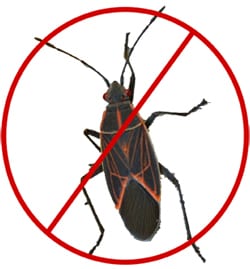
This great article from Buildings (published November 1, 2014) is unfortunately no longer accessible online. We have shared the National Apartment Association’s (NAA) synopsis of the article and hope you can avoid these pesky critters.
Building owners and managers must be on the lookout for five winter pests. The first is the box elder bug. Such pests feed on the little “whirlybird” seeds that are released from box elder and maple trees in the fall. When colder temperatures hit, they like to find a nice warm spot to hunker down for the winter. Box elder bugs are only a half inch long, so finding a way into most buildings is pretty easy. Look for them just inside the exterior walls of your building, on the warm sunnier side. Then, to stop these pests, all exterior cracks and crevices must be sealed. In addition, exterior doors must be sealed tightly on all sides. Cluster flies are the second winter pest to guard against. They tend to cluster in large numbers and come inside when winter arrives. To combat them, air handling and exchange units must be maintained with proper filters that prevent these pests from entering the airflow. Additionally, filters must be properly fitted within the unit to prevent bypassing. Asian multi-colored lady beetles are a potential third pest problem. They are often found in buildings during the winter, moving in groups, and releasing a smelly, yellowish liquid that can stain wall and ceiling coverings. Entrances must be fitted with brushes, gaskets, air curtains or other devices as appropriate to ensure that such insects cannot crawl or fly into the building.
A fourth pest to fight off now that it’s cold is the brown marmorated stink bug. Such pests when disturbed release a strong, foul order to the point where the surrounding area can be rendered unusable. The article’s author urges that all exterior doors and windows be kept closed or properly screened when open. In addition, the most effective means of removing these pests is by vacuuming occupied areas. Finally, be on the lookout for common house mice. Removal typically requires an effective trapping program.
